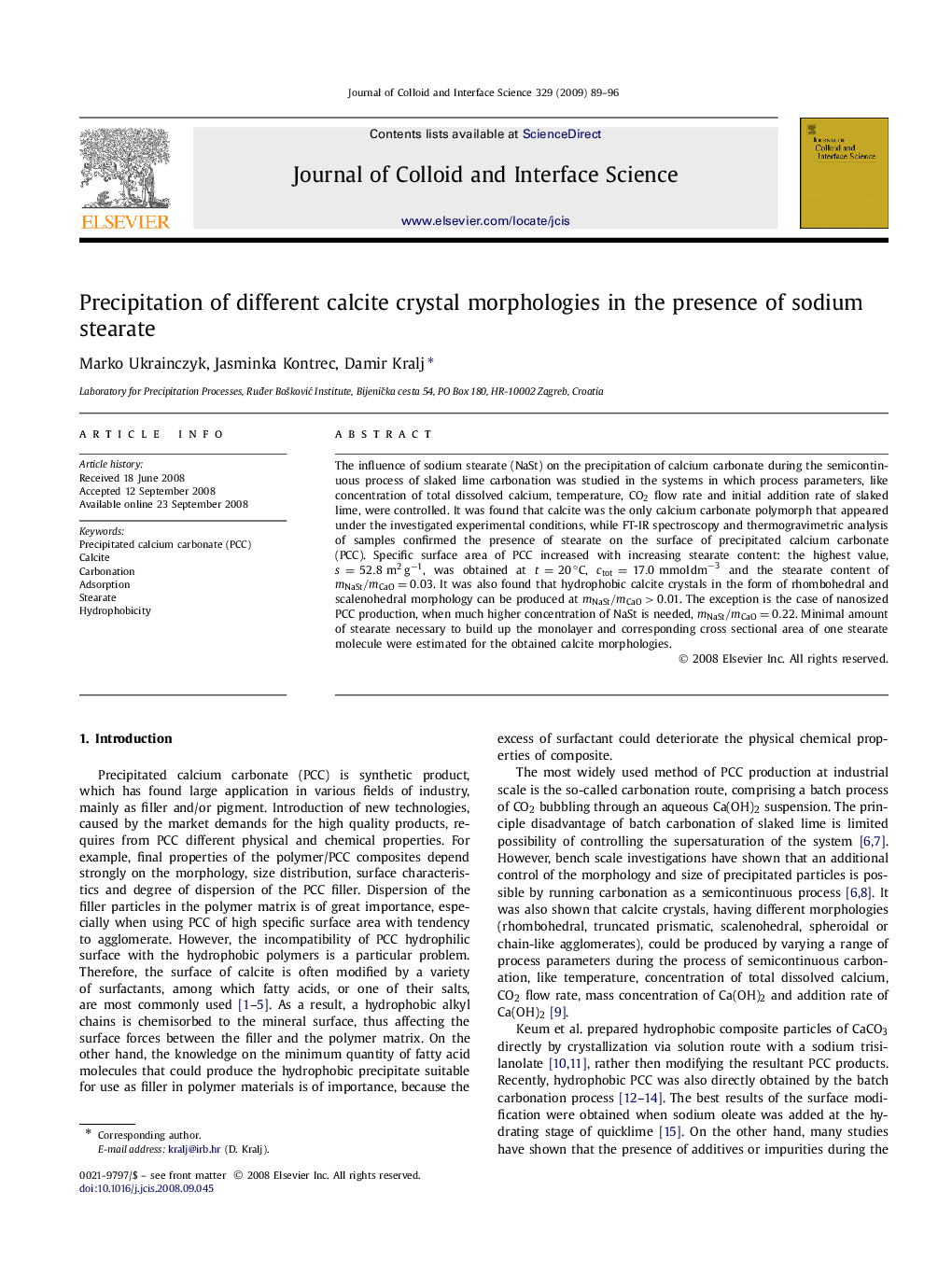| Article ID | Journal | Published Year | Pages | File Type |
|---|---|---|---|---|
| 611168 | Journal of Colloid and Interface Science | 2009 | 8 Pages |
The influence of sodium stearate (NaSt) on the precipitation of calcium carbonate during the semicontinuous process of slaked lime carbonation was studied in the systems in which process parameters, like concentration of total dissolved calcium, temperature, CO2 flow rate and initial addition rate of slaked lime, were controlled. It was found that calcite was the only calcium carbonate polymorph that appeared under the investigated experimental conditions, while FT-IR spectroscopy and thermogravimetric analysis of samples confirmed the presence of stearate on the surface of precipitated calcium carbonate (PCC). Specific surface area of PCC increased with increasing stearate content: the highest value, s=52.8 m2g−1, was obtained at t=20 °Ct=20 °C, ctot=17.0 mmoldm−3 and the stearate content of mNaSt/mCaO=0.03mNaSt/mCaO=0.03. It was also found that hydrophobic calcite crystals in the form of rhombohedral and scalenohedral morphology can be produced at mNaSt/mCaO>0.01mNaSt/mCaO>0.01. The exception is the case of nanosized PCC production, when much higher concentration of NaSt is needed, mNaSt/mCaO=0.22mNaSt/mCaO=0.22. Minimal amount of stearate necessary to build up the monolayer and corresponding cross sectional area of one stearate molecule were estimated for the obtained calcite morphologies.
Graphical abstractA simplified model of stearate adsorption onto the stoichiometric calcite surface.Figure optionsDownload full-size imageDownload as PowerPoint slide
